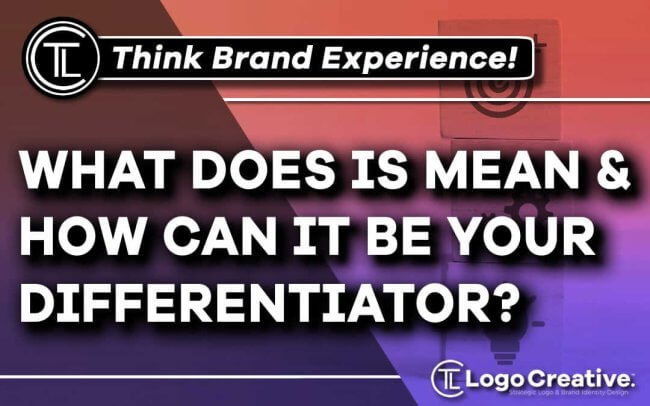Most CEOs, owners of small and medium-sized businesses understand the importance of a long-term marketing strategy. In this article we look at Brand Experience: What Does It Mean And How Can It Be Your Differentiator?
For those who want to achieve great sales, targeted media advertising and branding are the main tools. This is key for any brand experience. No marketer will deny that, when selling, it is important to use original or branded packaging.
The same applies to outdoor advertising stands, the popularity of which is increasing every year. Although, when creating most graphic posters, designers these days are more meticulous. This is due to the following:
- Brand awareness is key among all factors motivating the purchase of a product. This means that the buyer’s experience for a particular company will determine its bottom line. That’s why every startup should meticulously approve the identity because this is the main factor affecting recognition.
- People are not always ready to buy products from a little-known manufacturer. This is because, due to globalization, the markets are over-saturated. As a result, building the company’s experience begins with developing an advertising strategy. Without this, people won’t know about your project.
- Creative logo design allows for the creation of corporate accessories, that increases team spirit. This confirms the importance of identity, without which the experience of novice business owners will not be so promising.

For most companies, it is increasingly important to be responsive and think from the user’s point of view. All global businesses prefer interviews, polls, contextual inquiries, and organize events for different consumer groups in order to maintain the company’s popularity.
The ultimate goal is to truly understand the consumer’s needs and wants. Although it is not easy and people have to use a variety of techniques, which we will tell you about in our article. Our experts have prepared only the most important things.
Table of Contents
Brand Experience – Step-by-Step Guide from Our Team
Building a personal brand will be useful and necessary for any novice business owner. We’re talking about the thousands of startups who launch new projects in the US and Europe every year.
If we are talking about the trends of 2021, most of the new projects are associated with cryptocurrency, bio-energy and green energy. In order to define long-term goals, such people prefer to turn to specialists who are fluent in design thinking.
It would be fair to say that leading brands with extensive consumer experience such as Apple and Nike have already set the standard for design thinking.
Fortunately, startups can adopt it. Although this does not mean that it will be easy for a beginner business owner to cope with competitors. But, it’s possible and anyone who wants to create a truly effective brand should pay attention to several important aspects.
Step 1: Market Positioning
For any startup, product positioning in the first months of starting a business is very important. Such activities are key for both beginners and experienced leaders.
According to analytics, the definition of target audience and competitors are equally important. A good audit will reduce advertising costs. Any marketer will confirm the importance of these principles.
Most specialists recommend CEOs clearly define the branding strategy, visually identify the product, and determine the further development of the business, including entering new markets. Only based on the positioning of the company, people can choose a long-term and short-term strategy.

Correct and meticulous positioning ultimately leads to the formation of a positive buyer’s perception. It’s about both the manufacturer and a certain product.
As the dynamics of the development of large segments in the market shows, investments in the popularization of the product will always pay off.
Plus, at the initial stage, all business owners should set goals that are realistic and understandable for buyers and potential partners. The informative factor will be no less important. This means that a company that does not have a social media presence is doomed to fail.
Step 2: Promises to the Customers and Partners
Consumer behavior largely depends on the manufacturer’s promises. In doing so, large companies can no longer implement their strategies with only banner ads.
Without direct communication, any business is unlikely to be successful. Given that most manufacturers do not have their own retail outlets, they turn to intermediaries. This way of market development is especially relevant for the food industry, sales of clothing, and household appliances.
In order to increase profitability, such a strategy should be well-thought-out. We’re talking about promises for consumers, partners, and people who want to assist in building a promotional strategy.
The company’s principles must be understandable to the parties concerned. Only in this case, the partnership will be free of misunderstandings and incidents.
Cooperation of manufacturers from different segments is always justified due to the following: high efficiency, more stringent selection of personnel, adopting the experience, and different techniques in marketing. Such methods also work well for consumers.
Experts are confident that advertising stands should not separate the manufacturer and the buyer. That’s why most business owners prefer promotional communication and partnership.
Partially, such strategies can be implemented through social media, but one cannot do without organizing corporate events, conferences, exhibitions.
Step 3: Perspectives & Identity
People who decide to launch a new business one way or the other will have to start promoting a new product. Tools such as crowdfunding and branding will significantly simplify most tasks.
In the context of globalization, market positioning is just as important as investment, no matter how it is made. When startups create the correct, and most importantly, the original logo that corresponds to the company’s goals, it will be easier to attract interested partners.
Identity can also be used for the following:
- Branding of vending machines.
- Placement of advertising by car
- Customization of social profiles and landing pages
- Creation of original corporate accessories (pens, notebooks, briefcases, T-shirts, etc)
- Design photo zones at corporate events, fairs, and equipment exhibitions

Identity is essential to marketing these days. That’s why, the smallest details should be taken into account when creating the logo, packaging, and other things.
We’re talking about colors, packaging, visual shapes, and more. The attitude to ecology is also important. Many large brands have been able to increase their awareness precisely because of their participation in green projects. The leaders of political parties and civic organizations do not disdain such tricks.
Step 4: Build Brand Perception
Brand experience is extremely important for most startups. Research has shown that customer acquisition costs 5 to 25 times more than retention. Apple is a great example of correct brand loyalty.
While none of the current marketing strategies focus on the technical details of this company’s products, American people most often buy devices on iOs.
The same trend is in European countries, where we have strong competition in the electronics segment. Despite this fact, in terms of sales, Apple has always been in the lead. This is because this trademark is always associated with innovation and the highest quality.
No less successful is the Nike case, which is associated not only with shoes, but also a specific lifestyle that corresponds to the company’s achievements.
This brand is known all over the world. According to Nike marketers, people need to understand that the products they buy are really original and the opinion of the consumer is taken into account.
For this team, brand experience is all about building a relationship with a customer that involves emotions and common challenges.
Step 5: Engage Customers and Influences
An excellent example of the successful implementation of such a methodology is the Domino’s project “Let’s Cook Lunch” that took place in the UK in 2012. This company was driven by people to add the hashtag #letsdolunch to their tweet or post and promised all members huge lunch discounts.
As a result, the number of advertising shown was over 50,000, which significantly increased the recognizability of the Domino’s brand. This is just one example. Influencer marketing is getting more and more popular every year and brings celebrities, bloggers, and marketers together in one place.
According to research, conducting mass events with public involvement increases the likelihood of brand recommendation by 65% and the likelihood of a purchase by 59%.
Live experiences are a great way to interact and engage with consumers. To impose such a method, today’s business has many tools, such as augmented reality and artificial intelligence.
These days, consumers increasingly rely on the suggestions of real people through online media. By working with an influencer (blogger or celebrity) whose interests and commitment match the company’s requirements, business owners increase their bottom line.
Of course, it works and people see such ads not only on TV but also on social media. While not a required step, using influencer marketing can help build a company’s trust, authenticity, and credibility.
Branding in Retail & Specifics of its Implementation
The popularization of product categories by creating an exaggerated demand and more detailed control over sales is no longer something new for marketers.
Such activity can be attributed to retailers or suppliers. Although sometimes outside specialists are required. We are talking about experts who provide assistance in assessing the presentation attractiveness of products that fill the shelves of stores and retail chains.
Any strategy for promoting products through branding in retail includes the following:
- Monitoring the availability of products for a potential buyer. Based on the information received, forecasts for future orders will be made. This is very important for improving the quality of cooperation with retail companies. In most cases, the responsibility for this chain of sales lies with outside experts. This is the only way manufacturers can be sure of the objectivity of analytics.
- Development of individual programs for partners, including the original promotions. Such a way to make itself known, as well as display advertising, is always used by major brands. The distribution of products with promo is always positively perceived by the future buyer but beginners should understand that unobtrusiveness is essential for most advertising techniques.
In Summary
Branding increases the recognition of the following types of goods: food, furniture, household items, etc. Such a technique is one of the traditional tools for developed markets and influences the company’s positive experience. The correct strategy provides additional growth in the dynamics of product sales.

Experienced marketers, designers, and other professionals are part of the staff of most vendors. By recruiting such a team, business owners will be able to achieve a long-term sales goal.
The increase in the volume of products sold in retail chains is achieved through the introduction of design solutions for packaging and advertising materials and good promotions. To do this, people need to have experience and focus on results.
Join The Logo Community
We hope you enjoyed this article about Brand Experience: What Does It Mean And How Can It Be Your Differentiator?
If you would like more personal tips, advice, insights, and access to our community threads and other goodies, join us in our community.
You can comment directly on posts, access our community threads, have a discussion and ask questions with our founder Andrew.
If you’re looking to learn more about brand strategy, we highly recommend eRESONAID with our friend and acclaimed brand strategist and author Fabian Geyrhalter, it’s packed full of knowledge and insights you will need to learn to become a brand strategist or apply what you learn within your own business.
Author Bio
Veronica Cassidy is a young and progressive writer. She creates unique texts that will impress any reader. She is working for the company ICOholder. She approaches everything responsibly and creatively.


